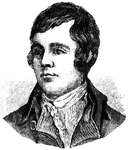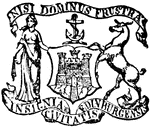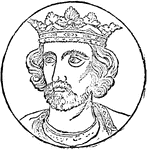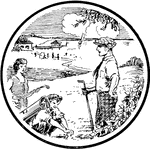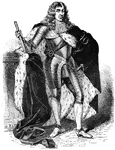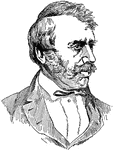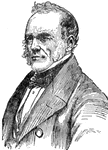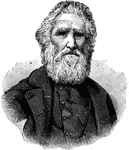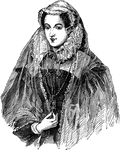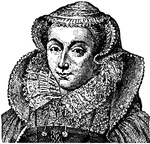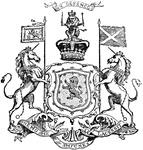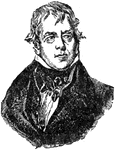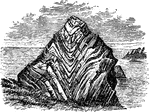Clipart tagged: ‘Scotland’

Écu, Obverse
The obverse side of an écu of James V of Scotland, a Scotch gold coin also called a crown.
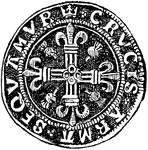
Écu, Reverse
The reverse side of an écu of James V of Scotland, a Scotch gold coin also called a crown.

Melrose Abbey
Melrose Abbey is a Gothic style Christian monastery located in Melrose, Scotland. The Abbey was founded…

Melrose Abbey
"As the ruins of Fountains Abbey are a memorial of the iconoclasm of the Reformation movement in England,…
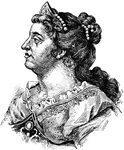
Queen Anne of England
The Queen of England, Scotland and Ireland. She was born on February 6, 1665 and died on August 1, 1714.
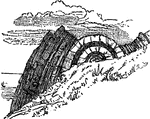
Anticlinal Fold
A symmetrical anticlinal fold, the top of which has been eroded. Near St. Abb's Head, Scotland.

Highland Bagpipe
"Bagpipe, a musical wind-instrument of very great antiquity, having been used among the ancient Greeks,…
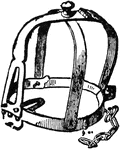
Brank
"Brank, or Branks, an instrument and formerly used in Scotland, and to some extent also in England,…
Forth Bridge
The Forth Bridge is a cantilever railway bridge over the Firth of Forth in the east of Scotland, to…

Charles II
Charles II (Charles Stuart; 29 May 1630 - 6 February 1685) was the King of England, Scotland, and Ireland.
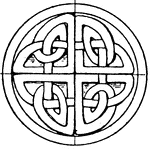
Celtic Stone Cross Circular Panel
This Celtic stone cross circular panel is found in St. Vigeans, Angus, Scotland.

Crannoge
"Crannoge, the name given in Ireland and in Scotland to the fortified islands in lakes which were in…

Skye Terrier
"The Skye Terrier came originally from the Isle of Skye in Scotland, where it was kept for destroying…
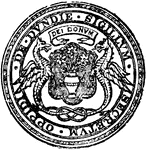
Dundee
"A royal and parliamentary burgh and seaport, situated on the east coast of Scotland, in the county…
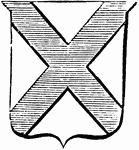
Saltire Flag
In heraldry, an ordinary in the form of St. Andrew's cross, formed by two bends, dexter and sinister,…

Lion
"The lion holds an important place among the animals born in coat-armor. As early as the 12th century,…
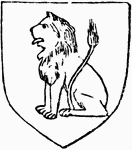
Lion
"The lion holds an important place among the animals born in coat-armor. As early as the 12th century,…
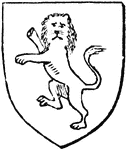
Gardant Lion
"The lion holds an important place among the animals born in coat-armor. As early as the 12th century,…
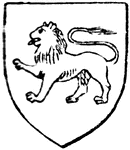
Passant Lion
"The lion holds an important place among the animals born in coat-armor. As early as the 12th century,…
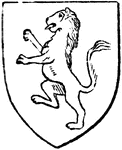
Rampant Lion
"The lion holds an important place among the animals born in coat-armor. As early as the 12th century,…
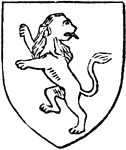
Rampant Regardant Lion
"The lion holds an important place among the animals born in coat-armor. As early as the 12th century,…
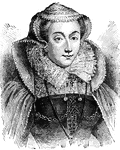
Mary Queen of Scots
Mary, Queen of Scots (1542 – 1587), also known as Mary Stuart or Mary I, reigned over Scotland from…
!["The buildings which have been constructed in these various styles differ essentially from those which have been carried out in the same styles in other countries. In churches and other buildings erected in the Gothic style this difference mainly consists in deficiency of strongly marked architectural keeping, for both main and subordinate features are generally irregular. In most cases the whole group is highly unsymmetrical, and the tower is at one corner, by which a picturesque effect is aimed at [shown here]. The material and the mode of construction are generally left visible, and it is endeavoured to utilize them as ornament; and this not only externally but also in the interior, where the beams and rafters of the roof are often left quite bare; they are even thus exposed where their appearance is not in keeping with the destination of the buildings."](https://etc.usf.edu/clipart/74400/74413/74413_memorial_chu_mth.gif)
Memorial Church in Scotland
"The buildings which have been constructed in these various styles differ essentially from those which…

Wind-Powered Sailboat
First used by the Dutch in the 16th and 17th centuries and later refined in North America from the early…
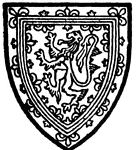
Scotland
The king of Scots bore Gold a lion within a double tressure flowered and counterflowered gules
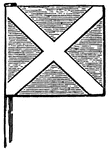
Scotland, St. Andrew's Banner
Scotland, St. Andrew's Banner. St. Andrew is the patron saint of Scotland.

Badge of the Order of St. Patrick
"St. Patrick, or Patricius, is the apostle or patron saint of Ireland; said to have been born near the…
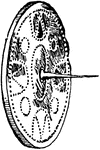
Highland targe
"The targe of the Scottish Highlands, composed of wood and leather, and studded with brass decoratively…
Thrusts in the Northwest Highlands of Scotland
Section in the Northwest Highlands of Scotland showing the overthrust of the Archaean onto the older…
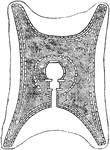
Tumulus
"Plan of chambered barrow or cairn, at Garrywhin, Caithness. BARROW, a sepulchral mound of earth or…

Sir William Wallace
Sir William Wallace was a Scottish knight, landowner, and patriot who is know for leading a resistance…

